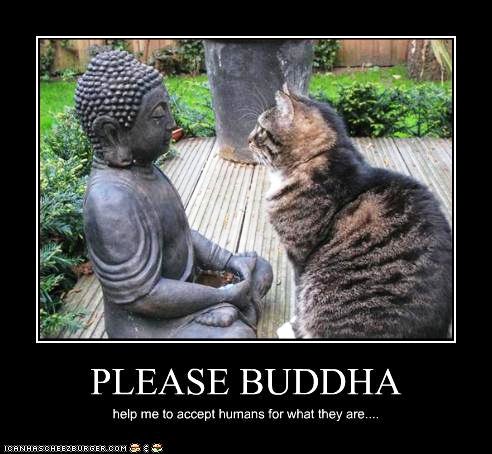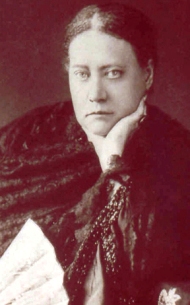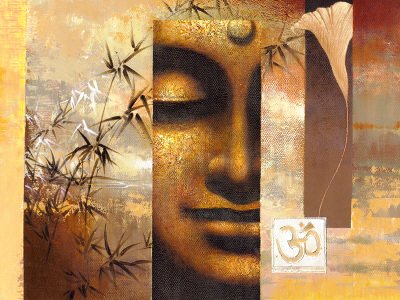
Kwan Yin, Artist Vitthal Das Rathore
“IT is unfortunate that Buddhism’s most enduring (and universal) contribution to the world has been insufficiently translated as compassion. The original Sanskrit word is ‘karuna,’ which holds within itself traces of the fragment ‘ru,’ meaning to weep. While the Oxford dictionary describes compassion as pity bordering on the merciful, karuna is actually our ability to relate to another in so intense a measure that the plight of the other affects us as much as if it had been our own.
“Over centuries, Kuan Yin’s visual depictions have highlighted her lithe, flowing form, much like the willow tree itself, which has the ability to bend during the most ferocious winds and then spring back into shape again. Indeed, who wants to stand rigid like the tall oak that cracks and collapses in a storm? Instead, one needs to be flexible like the willow, which survives the tempest.”
(Kuan Yin, The Compassionate Rebel)
H. P. Blavatsky’s definition of Compassion, in The Voice of the Silence, remains the favorite of Theosophists:
Yet, one word. Canst thou destroy divine compassion? Compassion is no attribute. It is the LAW of laws — eternal Harmony, Alaya’s SELF; a shoreless universal essence, the light of everlasting Right, and fitness of all things, the law of love eternal.
The more thou dost become at one with it, thy being melted in its BEING, the more thy Soul unites with that which IS, the more thou wilt become Compassion Absolute.
Such is the Ârya Path, Path of the Buddhas of perfection.

“Never will I seek nor receive private, individual salvation; never will I enter into final peace alone; but forever and everywhere will I live and strive for the redemption of every creature throughout the world.”
Buddha Fields
“First, we need to understand what a Buddha-field or pure land is. It is a place where everything is conducive for being able to study and practice the Dharma twenty-four hours a day.”

The Child State
“You don’t have to work; you don’t have to eat; you don’t have to sleep; you don’t have to pay rent; you don’t have to go to the toilet – you don’t have to do anything except study and practice all the time. It’s not a place that you go, hang around the swimming pool, and play cards all day long.
“Buddha-fields are filled with Arya Bodhisattva, those Bodhisattva who have had nonconceptual cognition of voidness, and there they are taught by Sambhogakaya forms of Buddhas, physical forms that Buddhas manifest in that make full use of the Mahayana teachings. That’s what happens in pure land Buddha-fields.”
Sambhogakaya
The Three Buddhic Bodies:
1. Nirmanakaya.
2. Sambhogakaya.
3. Dharmakaya.
“The first is that ethereal form which one would assume when leaving his physical he would appear in his astral body — having in addition all the knowledge of an Adept. The Bodhisattva develops it in himself as he proceeds on the Path. Having reached the goal and refused its fruition, he remains on Earth, as an Adept; and when he dies, instead of going into Nirvâna, he remains in that glorious body he has woven for himself, invisible to uninitiated mankind, to watch over and protect it.
“Sambhogakâya is the same, but with the additional lustre of ‘three perfections,’ one of which is entire obliteration of all earthly concerns.

Manushi Buddha
“The Dharmakâya body is that of a complete Buddha, i.e., no body at all, but an ideal breath: Consciousness merged in the Universal Consciousness, or Soul devoid of every attribute. Once a Dharmakâya, an Adept or Buddha leaves behind every possible relation with, or thought for this earth. Thus, to be enabled to help humanity, an Adept who has won the right to Nirvâna, “renounces the Dharmakâya body” in mystic parlance; keeps, of the Sambhogakâya, only the great and complete knowledge, and remains in his Nirmânakâya body. The esoteric school teaches that Gautama Buddha with several of his Arhats is such a Nirmânakâya, higher than whom, on account of the great renunciation and sacrifice to mankind there is none known.”
- H. P. Blavatsky, (The Voice of the Silence 77-78 fn)

“Although ‘Nirmanakaya’ is technically the name for the body or ethereal vesture of a Bodhisattva – being described on p. 45 of The Voice of the Silence as the ‘Bodhisattvic Body’ – it’s also often used simply as a synonym for the Bodhisattva himself or herself.
“This is the acquirement or attainment of a permanent astral, closely linked with the attainment of unbroken continuity of consciousness. According to Theosophy, this is the true immortality.”
(Blavatsky Theosophy Group UK, “The Permanent Astral”)
Offering the Mandala
Here is the great Earth,
Filled with the smell of incense,
Covered with a blanket of flowers,
The Great Mountain,
The Four Continents,
Wearing a jewel
Of the Sun, and Moon.
In my mind I make them
The Paradise of a Buddha,
And offer it all to You.
By this deed
May every living being
Experience
The Pure World.Idam guru ratna mandalakam niryatayami.

Lynne McTaggart
Lynne McTaggart, author of The Field, explains what she learned from her intention experiments. These involved hundreds of participants focusing healing intentions towards otherwise complete strangers — and how the healings reportedly healed the healers themselves.
The Intention Experiment: How Healing Healed the Healers:
After participating, an overwhelming majority of our participants not only felt better about themselves and the world; they also tended to get along better with the people with whom they came into contact, most especially perfect strangers.Many made profound changes in their lives and directions, and even sought to radically change direction or careers .Others found it easier to cope with setbacks and downturns in their lives, including their current financial difficulties. Most of all, they found it easier to accept people or ideas that clash with their own.These preliminary results suggests that using this kind of altruistic intention not only may help to grow your own sense of compassion and tolerance, but also may help you to heal your own life.It accords with much of the research I have studied on intention. Altruistic intention heals the healer as much as the healee.
♦
Thoughts are Things
By Lynne McTaggart
Next are excepts from instructions inspired by the greatest of all spiritual teachers and healers, The Buddha.

Guide to the Bodhisattva’s Way of Life
Guide to the Bodhisattva’s Way of Life: How to enjoy a life of great meaning and altruism
Course VII: The Vows of the Bodhisattva
Even just wishing you could stop
A headache another person has
Can bring you merit without measure
Because of the helpful intent you feel.
What need then to mention the wish
That you could stop the immeasurable pain
Of every being, and put every one
In a state of measureless happiness?
There are many methods for achieving the “Great Compassion.” Each person strives in his/her own way, but there are useful contemplative truths. In The Voice of the Silence, one finds an important teaching about compassion. It is not an individual “virtue,” but rather a universal law of life.
♥
The Law of Life
The Asian Classics Institute
Middle Way Philosophy (Madhyamika), Level Two
Course VII: The Vows of the Bodhisattva
Reading One: Bodhichitta, the Wish for Enlightenment Tsongkapa
The following selection is taken from the Commentary on the Three Principal Paths, an explanation by Pabongka Rinpoche (1878-1941) of the famous root text by Je Tsongkapa (1357-1419).
The Vows of the Bodhisattva:
To actually gain the wish for enlightenment he must first contemplate it. To contemplate it, he must first learn about it from another. “Loving-kindness” is an almost obsessive desire that each and every living being find happiness. “Compassion” is an almost obsessive desire that they be free of any pain.
Think of how a mother feels when her one and only and most beloved son is in the throes of a serious illness. Wherever she goes, whatever she does, she is always thinking how wonderful it would be if she could find some way of freeing him quickly from his sickness.

Mother Theresa
These thoughts come to her mind in a steady stream, without a break, and all of their own, automatically. They become an obsession with her. When we feel this way towards every living being, and only then, we can say we have gained what they call “great compassion.”
Once you develop great compassion, then you can develop the extraordinary form of personal responsibility, where you take upon yourself the load of working for others’ benefit. And the wish to achieve enlightenment for every living being comes from this.

H. P. Blavatsky 1877
We close with H. P. Blavatsky’s inspired reminder to all aspiring student-disciples from her The Key to Theosophy, on how to help others:
The Theosophical ideas of charity mean personal exertion for others; personal mercy and kindness; personal interest in the welfare of those who suffer; personal sympathy, forethought and assistance in their troubles or needs.
We Theosophists do not believe in giving money (N. B., if we had it) through other people’s hands or organizations. We believe in giving to the money a thousandfold greater power and effectiveness by our personal contact and sympathy with those who need it.
We believe in relieving the starvation of the soul, as much if not more than the emptiness of the stomach; for gratitude does more good to the man who feels it, than to him for whom it is felt.
H. P. Blavatsky, The Key toTheosophy

“That Secret Path leads the Arhan to mental woe unspeakable; woe for the living Dead, and helpless pity for the men of Karmic sorrow.”






This text touched my heart. Thanks
LikeLike
Hi Aspasia, many thanks for your comment and readership. Namaste!
LikeLike